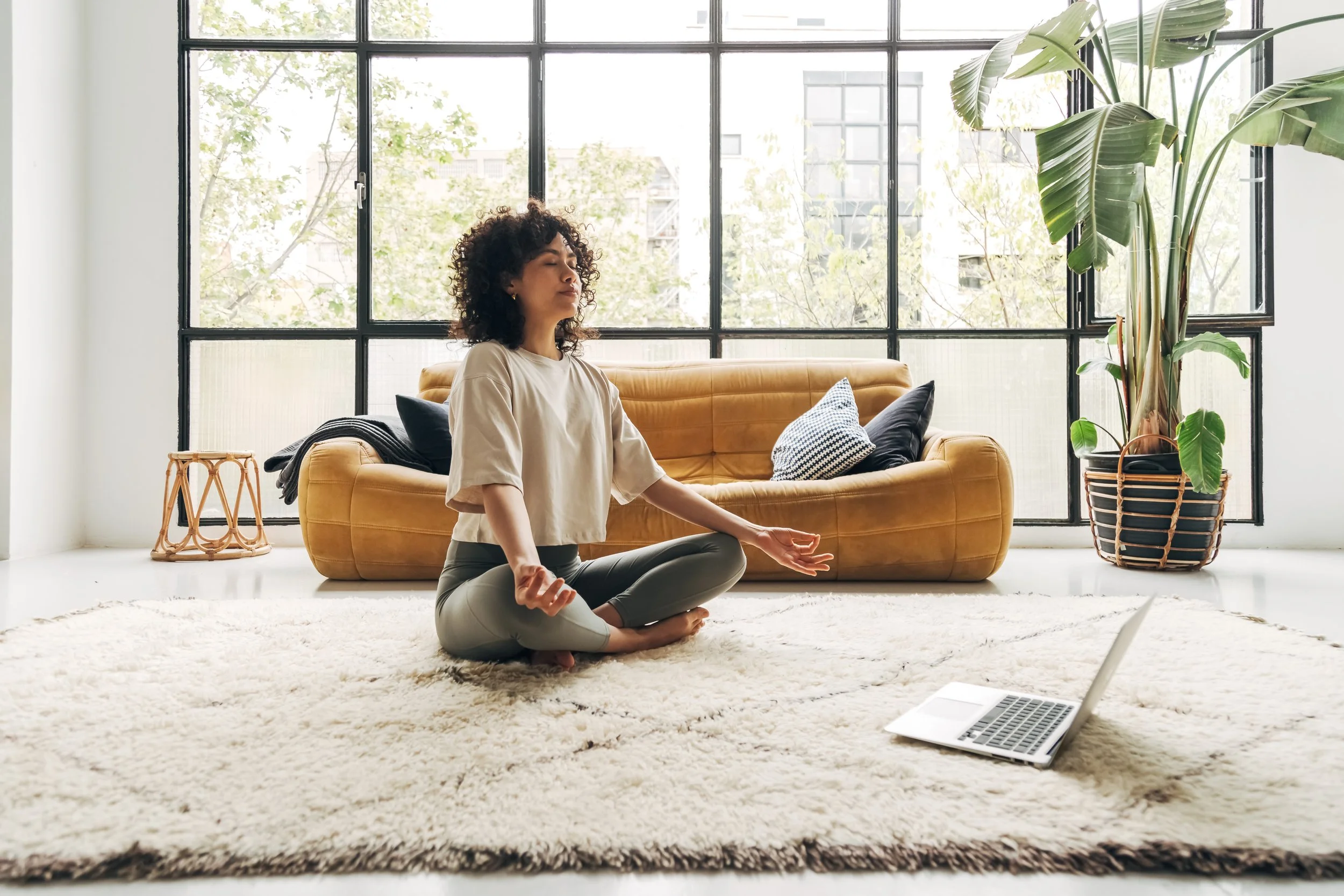Five Simple Ways to Tap Into Your Design Intuition
Designing a space that truly resonates with your soul requires more than just an eye for aesthetics—it calls for tapping into your intuition. Holistic interior design is about creating environments that not only look beautiful but also feel harmonious and nurturing to your body and spirit. Here are five simple methods I use with my clients to help them connect with their intuition to craft holistic, soul centered interiors.
1. Approach your Spaces Mindfully
Mindfulness is key to intuitive design. When you approach design with a calm and present mind, you're more attuned to what a space needs as well as how you want it to feel.
How to tap into mindfulness:
Mindful Observation: Spend time in the room you are designing. Sit quietly and observe how the space makes you feel. Notice areas that feel tense or unbalanced and consider what changes could improve the flow and energy. Spend some time afterwards journaling about how you felt in the space and how you would like to feel after the design process is completed. This can be a brief 5-10 minute reflection or even just some bullet points.
Meditative Practices: Before making design decisions, engage in a brief meditation. Clear your mind and focus on your breath. This can help you approach the design process with a fresh, intuitive perspective.
2. Listen to Your Body’s Response
Your body is a powerful tool for intuitive design. Physical sensations can guide you toward design and style choices that foster comfort and harmony.
Sensory Feedback: Pay attention to how different elements—like colors, textures, and furniture arrangements—make you feel. Does a certain fabric soothe you? Does a particular layout make you feel cramped? How and from where does natural light fill the space?
Body Mapping: Stand or sit in various spots within the space. Notice how your body reacts to each position. Use these insights to arrange furniture and décor in a way that feels naturally comfortable.
Somatic Movement: Somatic exercises prioritize the sensory experience from within the body. Practicing mindful, slow and deliberate movement can enhance body awareness, coordination and alignment. Somatic yoga is an excellent way to tap into your deep, inner senses.
Reiki: It is believed that this Japanese healing technique can reduce stress, heal your energies and restore balance to your body. It aims to address physical, emotional, mental and spiritual aspects of wellbeing. You can easily access reiki from various practitioners' videos online.
3. Embrace Nature
Nature is a profound source of inspiration and grounding for intuitive design. Bringing the outdoors inside can enhance the natural flow and energy of a space.B
Biophilic Design: Use plants, natural light, and organic materials to create a connection with nature. Feeling connected with nature in turn provides a sense of calm and peace. Plants and other greenery are an easy way to bring this sense of tranquility and life into your home.
Pro Tip: Make sure to use real plants whenever possible. Faux plants can look tacky and also don’t carry the positive vibrational energy that living plants do. If you must use the fake ones because you are allergic or have other health concerns, make sure to invest in high-quality realistic faux plants. Having the visual presence of greenery is better than none at all.
Natural Textures and Colors: Choose materials like wood, stone, and natural fibers. Opt for a color palette inspired by nature— think earthy tones, clean whites, organic greens and blues—to create a serene and balanced environment.
4. Journal Your Design Journey
Journaling can unlock your creative intuition and help you visualize your design concepts more clearly. Spend some time reflecting on the different aspects of your home that you love and those that you want to transform.
Here are a few journaling prompt ideas to get your intuitive vibes flowing:
Current Feelings: How do I feel in my home right now? Are there specific areas that make me feel stressed or uncomfortable? Why might that be?
Desired Atmosphere: What kind of atmosphere do I want my home to have? Do I want it to feel calm, vibrant, cozy, or energizing?
Space Functionality: How do I want each room in my home to function? Are there changes I can make to improve the flow and usability of each space?
Design Reflections and Inspiration: Keep a design journal where you record your thoughts, inspirations, and feelings about the space. Sketch ideas, collect inspiration images, jot down color schemes, and paste fabric samples. Reflect on what resonates with you and why. This can be a physical or digital journal. I love making inspo boards using programs like Photoshop or Canva (Btw, not an ad, I just love those programs!)
5. Trust Your Instincts
This one is the MOST important element in the successful design of your home. Intuitive design is all about trusting YOUR inner voice. While trends and expert advice are valuable, your personal sense of what feels right is paramount.
Personal Preferences: Don’t be afraid to go against the grain. If a design choice feels right to you, trust it, even if it’s unconventional. Your space should reflect your unique personality and energy.
Reflect and Adjust: After implementing design changes, take time to live in the space and observe how it feels. Be open to making adjustments based on your ongoing intuitive feedback.
Takeways:
Holistic interior design is a journey of connecting with your inner self to create spaces that nurture, inspire and reflect your soul. By practicing mindfulness, listening to your body, incorporating natural elements, journaling your process, and trusting your instincts, you can tap into your intuition and design environments that truly resonate with your spirit. Embrace your intuitive wisdom, and let it guide you to create interiors that are not only beautiful but also deeply harmonious and nurturing to you. Happy designing!






